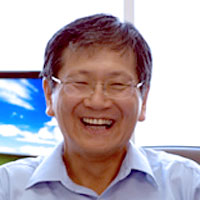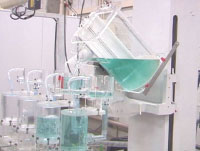Research highlights
Supervisory Control of Automatic Pouring Robot:
High Speed Motion Control of Automatic Pouring Robot with Suppressing Liquid Vibration
An innovative system is described for supervisory control of a total molten-metal pouring to improve the productivity of factories, the safety of workers, and the quality of products.
High speed motion control and sloshing (liquid suppression) control problems are trade-off issues. It is difficult to use conventional control methods to achieve level control and weight control with high speed motion control in pouring processes while suppressing sloshing.
Now, Kazuhiko Terashima and colleagues at Toyohashi University of Technology describe how these problems can be solved by a novel supervisory control.
In the pouring processes model, a forward tilting control input was calculated by an adaptive feed forward control system to hold the liquid into a sprue cup at a constant level considering the change effected by the accumulating slag in the ladle. A backward tilting input was obtained by means of the proposed hybrid shape approach applied to suppress the slosh. The supervisory control system switches from the forward tilting motion to the backward tilting motion by using model predictive control to achieve the accurate poured quantity.
The validity of the proposed total control system was demonstrated through experiments. The effectiveness of a proposed supervisory control including new control methods enabled the researchers to realize the level control, weight control, and sloshing control with high performance.
The proposed supervisory control of automatic pouring robot is extremely useful for not only casting pouring process in foundries but also process and transfer systems in other industries.
- Reference:
Ken’ichi Yano and Kazuhiko Terashima
Supervisory Control of Automatic Pouring Machine
Control Engineering Practice, 18, 230, (2010).
- Digital Object Identifier (DOI): ISNN 0967-0661
- System and Control Engineering Laboratory, Department of Mechanical Engineering, Toyohashi University of Technology

Kazuhiko Terashima



